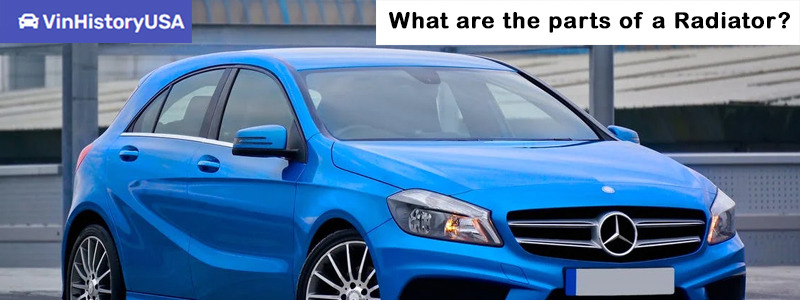While doing a free VIN Checkup, you can learn a lot about the vehicle, including its parts. But people are always confused about a radiator and its parts, even after looking for it online. So, in this article, we are going to tell you about Radiator and its parts.
What can a radiator do?
A radiator cools the engine by using cool air to take heat from a fluid coolant that is hot. The radiator is part of a sealed cooling system and functions as the exchanger for heat between the hot coolant out of the engine, and cooler air outside. It also prevents the engine from degrading its own internal heat source from excessive heat.
Parts of an engine
A radiator typically is replaced as a unit. There are many important components to a radiator and many more components within the cooling process. This is how everything works in concert to help keep the engine running cool. Talking about the engine, you can also do a car mileage check with the help of a VIN. It will give you an idea of how good your engine is.
Core
This is where the cooling occurs. Aluminum cores are a tube that is filled with hot coolant. It disperses heat as air moves through the tubes and is surrounded by a thick web of fins. Aluminum is utilized for its properties in dispersing heat and its lightweight weight. At the point that the coolant is able to pass across all of the tubes within the core, the airflow has sucked away a third of the heat that the engine produces.
Inlet/outlet tanks
Modern automobiles typically include plastic pipes or tanks that feed the central part of the car. The most obvious sign of this is in the outlet and inlet. At the point at which the coolant enters or leaves the core, there is a change in the substance that goes from plastic to aluminum. Plastic has a great weight-to-strength ratio and is excellent for dispersing heat. It’s also difficult to fix in the event of a leak.
Pressure cap
Also known as a radiator cap on older vehicles that help improve cooling system efficiency. Pressure increases the boiling point of water which means that an engine with a pressurized cooling system will not be able to boil at 212 degrees. When the engine of your vehicle is operating between 220 and 195 degrees The pressure cap helps keep the engine from boiling coolant each moment you go out.
Coolant
Coolant, often referred to as antifreeze is the fluid that circulates through the cooling unit. It absorbs the heat generated by the engine and releases it to the radiator. Coolant is composed of a variety of compounds, however, it’s mostly water. Along with stopping freezing, it also helps to keep vital parts of the engine from getting rusty.
Cooler for the transmission
A transmission cooler appears like the appearance of a miniature radiator. It has tubes that curve between aluminum fins. It’s located just in front of the radiator and is based using the same concept: cooler air pulls heat from the coolant in liquid form. The distinction is the heated liquid is the transmission fluid that is cooled and returned to the case can help prolong the life of the transmission.
Hoses
Flexible rubber Hoses connect the radiator with the block of the engine. The inlet is which is used to transfer hot coolant from the engine. Another outlet is used to return coolant back to the engine for a new cycle. If you’re experiencing problems with cooling most likely it’s an inoperative coolant hose. These are inexpensive and easy to replace.
Thermostat
It is a tiny device located in the cooling passages, which maintains the right temperature for coolant. When the engine is started the thermostat is shut, allowing the coolant to remain within the engine as it is warming to operating temperature. The proper amount of heat will cause the thermostat open, which allows complete circulation of the cooling system.
We hope now you know about a Radiator and its parts. If you are thinking about how to find my towed car, you can go to vinhistoryusa.com and check out there.

